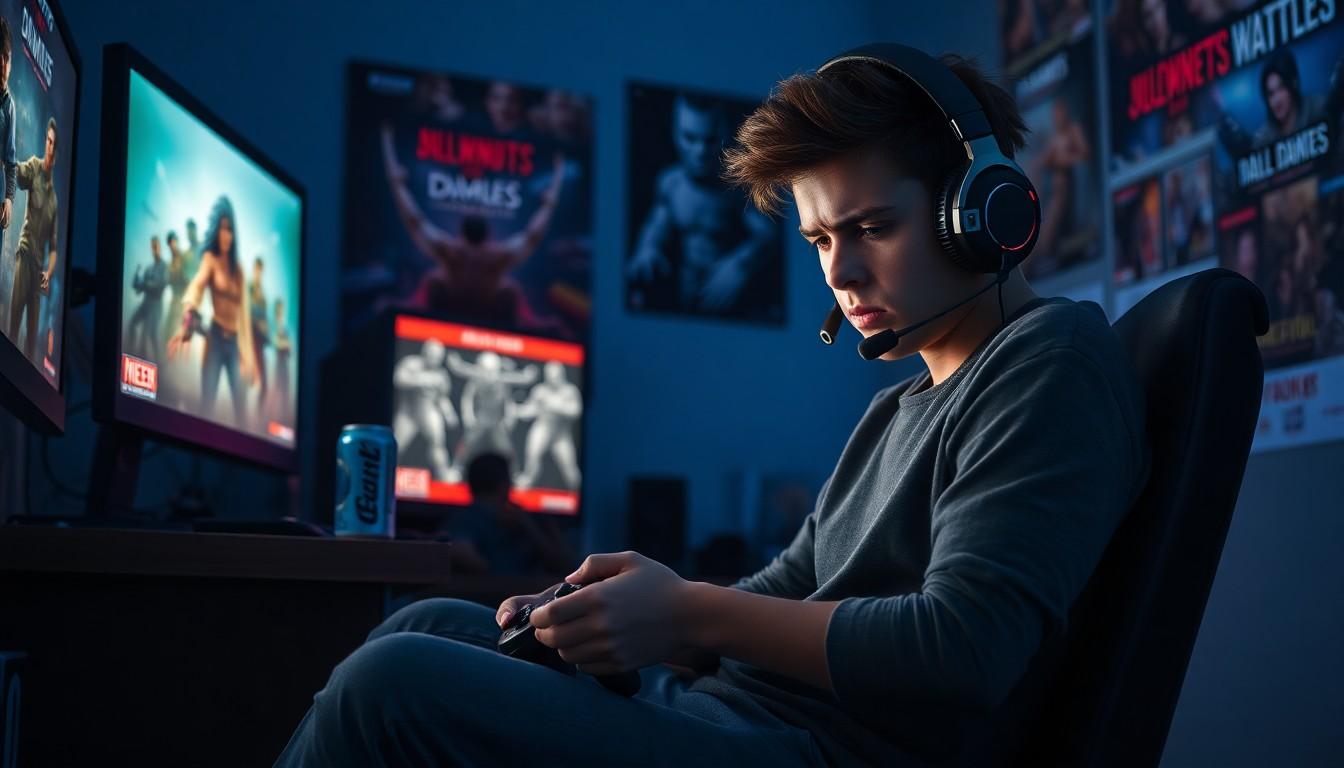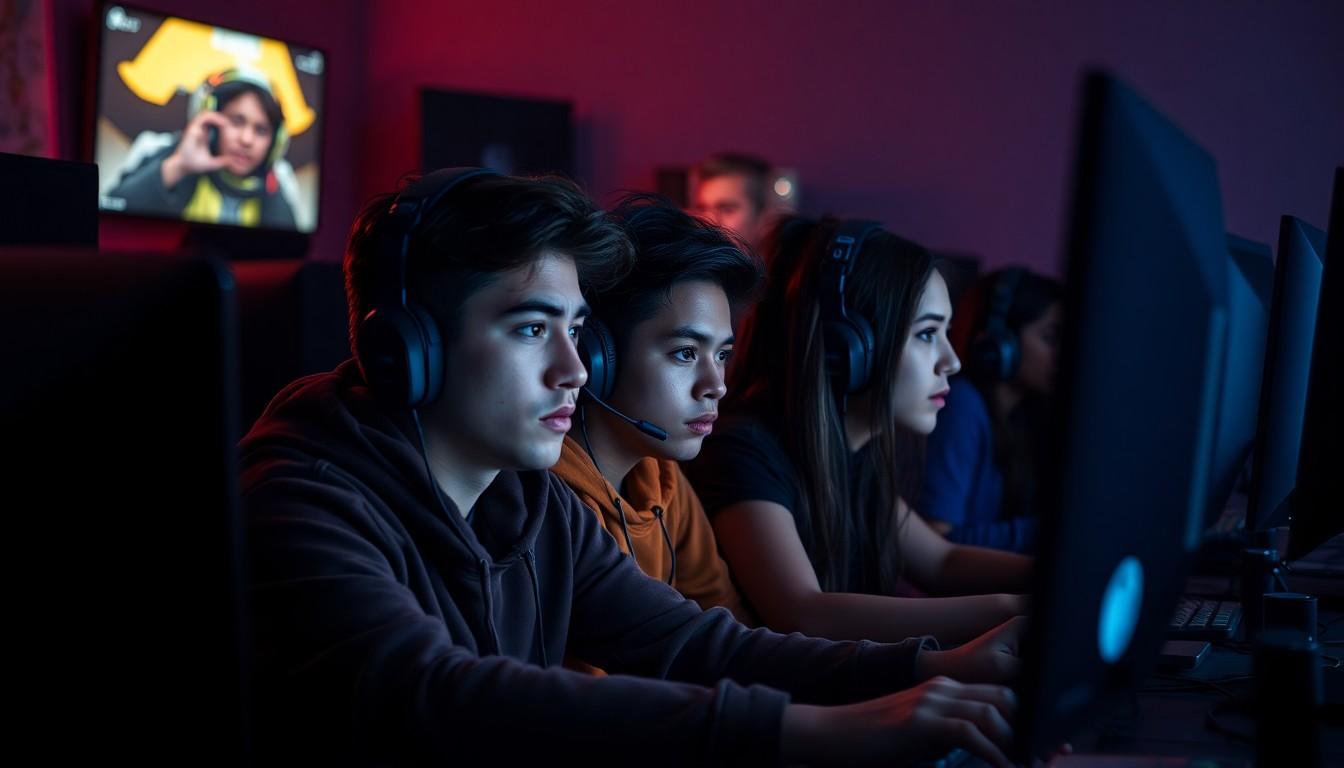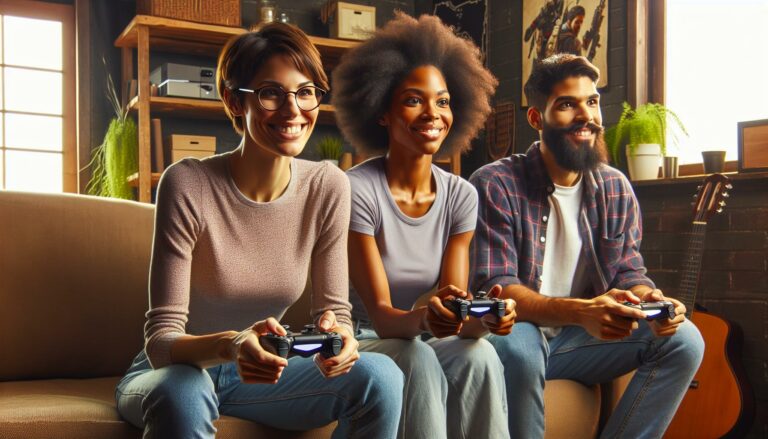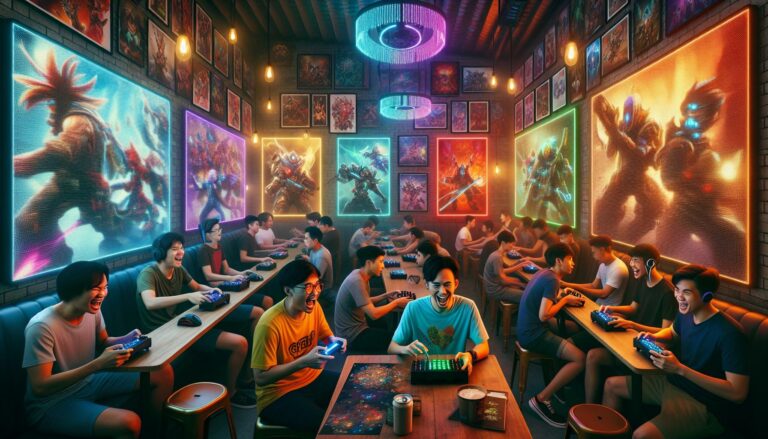In the vast universe of gaming, where epic battles and heroic quests reign supreme, there’s a dark side lurking in the shadows: the toxic gaming community. Picture this: you log in for a night of fun, only to be bombarded with insults, rage-quits, and a level of negativity that could make even the toughest warrior cringe. It’s like stepping into a digital battlefield where the real enemy isn’t the opposing team, but the players themselves.
But why does this toxicity thrive? It’s a mix of anonymity, competition, and the occasional keyboard warrior who thinks they’re the next gaming messiah. As players navigate this treacherous terrain, understanding the roots of toxicity becomes crucial. After all, gaming should be about camaraderie and epic victories, not a toxic wasteland of insults and bad vibes. Let’s dive into this phenomenon and explore how to reclaim the gaming paradise we all deserve.
Toxic Gaming Community
Toxicity in gaming manifests through negative interactions within player communities. Understanding this issue is crucial for fostering a healthier gaming environment.
Defining Toxicity in Gaming
Toxicity in gaming involves harmful behaviors that negatively impact player experiences. Insults, harassment, and unwanted aggression characterize these interactions. Compulsive behavior often emerges in competitive contexts, where players prioritize winning over sportsmanship. Factors such as anonymity and online culture exacerbate these actions. Players may feel emboldened to act aggressively behind a screen, affecting community dynamics. Recognizing the nuances of gaming toxicity helps clarify its pervasive nature.
Common Behaviors of Toxic Gamers
Common behaviors among toxic gamers include verbal abuse and bullying. They often use offensive language, targeting others based on skill or personal attributes. Rage-quitting, or leaving games in frustration, disrupts the gameplay experience for others. Additionally, some players engage in sabotaging teammates, undermining team objectives. Harassment through messaging or voice chat further complicates interactions. These behaviors contribute to a negative atmosphere, discouraging new players from joining communities. Identifying these signs prepares one to address issues in gaming effectively.
Impact on Players

Toxic elements in gaming communities significantly affect players. Negative interactions undermine the joyful experience that gaming should provide.
Psychological Effects
Toxic behavior can lead to anxiety and depression among players. Harassment and targeted insults increase feelings of isolation. Players often experience frustration due to constant negativity. A study indicated that 40% of gamers report emotional distress from online interactions. Experiencing this environment decreases overall enjoyment and may deter individuals from engaging further. Consequently, players may develop a lower self-esteem when subjected to continual criticism.
Social Consequences
Social dynamics change due to toxicity in gaming communities. Many players withdraw from interactions, fearing confrontation. The prevalence of toxic behavior can create a hostile environment, discouraging newcomers. A significant number of players assert that toxic experiences led them to abandon particular games or platforms entirely. Moreover, friendships formed in gaming often suffer due to negative interactions. As a result, players may prefer solitary gaming, leading to increased feelings of loneliness and disconnection.
Causes of Toxicity
Toxicity in the gaming community stems from several factors that shape player interactions. Understanding these causes can clarify the troubling behaviors observed online.
Anonymity and Online Behavior
Anonymity empowers players to act without fear of accountability. They often resort to insults and harassment, believing consequences are unlikely. Many feel liberated to express their frustrations, which leads to aggressive outbursts. This detachment diminishes empathy, causing an escalation in toxic behaviors. Furthermore, anonymity fosters an environment where negative actions become normalized, making it easier for players to mimic these behaviors. A survey indicated that 70% of gamers admit to engaging in toxic behavior when they believe they won’t face repercussions.
Competitive Nature of Gaming
Competition drives intense emotional investment in gaming. Players pursue victory at any cost, leading to heightened aggression and hostility. Rage-quitting emerges as a common reaction to perceived unfairness, resulting in further toxicity. Some gamers express disappointment through bullying or taunting opponents, while the desire to dominate sidelines sportsmanship. The stakes of competitive games can distort priorities, shifting enjoyment to a relentless drive for advancement. Competitive pressure influences around 60% of gamers to display toxic behavior when faced with losing situations.
Addressing the Issue
Toxicity in gaming communities demands effective solutions. Implementing community management strategies serves as a potential path toward improving player interactions.
Community Management Strategies
Forums and chat platforms benefit from strict moderation policies. These policies ensure harmful behaviors face swift consequences. Creating a code of conduct lays the groundwork for expected player behavior. Implementing reporting systems empowers players to flag toxic interactions. Encouraging positive reinforcement through rewards for good behavior fosters a supportive atmosphere. Involving community leaders in managing and guiding discussions also strengthens relationships among players. Evidence suggests environments offering inclusive activities decrease instances of toxicity.
Role of Game Developers
Game developers play a critical role in shaping player experiences. Integrating anti-toxicity features directly into games proves essential. Implementing real-time moderation tools allows for quick intervention against harmful behaviors. Providing anti-bullying resources within games educates players about the impact of their actions. Including player feedback in development processes also drives improvement. Developers should incorporate algorithms identifying and penalizing toxic behavior, reinforcing community standards. Evidence indicates that careful attention to these factors can significantly enhance player well-being and foster a positive gaming environment.
gamers advocate
Addressing toxicity in the gaming community is essential for creating a welcoming environment. By understanding the roots of negative behavior and implementing effective strategies, players and developers can work together to foster a more positive atmosphere. Encouraging respect and camaraderie not only enhances individual experiences but also strengthens the community as a whole. As gamers advocate for change and support one another, the hope is to shift the culture towards one that prioritizes enjoyment and connection. It’s time to reclaim the joy of gaming and build a space where everyone can thrive.




